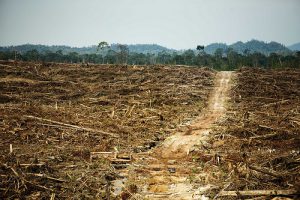In February 1995, China’s central bank – the People’s Bank of China – issued a notice requiring financial institutions to take protection of natural resources and the environment into account when making lending decisions. That document is regarded as the start of China’s efforts on “green credit”.
Almost two decades later, and with the more concrete Green Credit Policy now in place, what progress has China seen?
Last year, the Ministry of Environmental Protection’s Policy Research Centre published a report ranking China’s 50 biggest banks by market capitalisation on green lending criteria. Speaking at the study’s launch, the body’s deputy director Yuan Qingdan said only 12% of the banks examined were fully implementing a green credit policy. Implementation was not ideal at over half of the banks, he said, while 18% had no information available on their policy.
The report revealed that, since 2006, when information on breaches of environmental law was included in the central bank’s credit rating system, over 50,000 pieces of data have been submitted from all over the country. But submission of data by 30% of local environmental protection bureaus has fallen significantly below the levels required by both the state and central bank.
Yuan talked to chindialogue about the barriers to greener lending and the path ahead.
Xu Nan: What is holding the Chinese banking sector back from making greener lending decisions?
Yuan Qingdan: China’s 50 banks all have green credit policies in place, but generally these policies are just hung on the wall. They don’t actually influence credit ratings and lending decisions.
In the sector as a whole, lending to polluting, energy-hungry and resource-extracting industries is still high, and that’s particularly the case at city-level commercial banks. Those banks are strongly influenced by local governments, which prevent the local environmental authorities from providing information on breaches of environmental law by some companies, or in some projects. Some local governments require local banks to lend to environmentally risky companies.
There has long been a lack of motivation for banking institutions to implement green lending. Banks want profits, but no matter how financially innovative they are, someone will still need to pay to clean up the pollution created. China needs both a market environment and legal environment more conducive to promoting environmental protection. That’s a precondition for more green lending.
Compared with other countries, the financial sector in China is under a lot less, almost negligible, pressure to protect the environment. When an environmental problem arises, the media blames the company and government regulators, but rarely the financial bodies that lent money to the company. Things are very different overseas. In other countries, the public will ask: who invested? Who were the accomplices?
XN: China’s most important financial players are the big state-owned banks – the Bank of China, Industrial and Commercial Bank of China, the Construction Bank and the Agricultural Bank. How do they differ on green lending?
YQ: Not much. The state-owned banks respond to government control and macroeconomic regulation. The government has issued documents on green lending, and the China Banking Regulatory Commission (CBRC) put out plenty of specific measures – just last year it issued guidelines for green lending.
The big four banks are all responding by implementing those measures, for example by maintaining lists of firms to check for environmental wrongdoing when they apply for credit, and so on. But there are limitations: currently there are no standards for doing this, nothing is made public and there is no specific regulator or authority to check environmental assessments.
If a problem arises at a project the bank has loaned money to, it won’t make its involvement public. The CBRC might know, but the public doesn’t. Nobody dares to air their dirty laundry. In this sense, progress has been very limited.
XN: Which parts of the sector have shown the poorest performance? Where are the problems worst?
YQ: Overall, the big commercial banks are doing fairly well. The bigger the bank, the better its performance, in particular the state-owned banks. The local credit cooperatives do worse – they don’t have so many projects to select from.
Some polluting projects aren’t funded by lending, which means China’s ability to regulate them via lending policy is limited. And of course green policies don’t reach underground lenders. Big companies, even if they consume lots of energy or emit lots of pollution, can at least be seen and regulated by the authorities. The worst pollution comes from the areas regulation hasn’t reached, which aren’t even covered in the statistics.
XN: How green is Chinese finance compared to other countries?
YQ: I’m not sure you can make the comparison.
In China, green finance relies on top-down administrative instructions, and that doesn’t work in the long term. Take the US – over there, the Federal Reserve just has to manage interest rates, while there are laws to take care of green financing. And when you have a culture of open information, the public and NGOs also get involved. Things are completely different in China: not just the market environment, but the ways of operating, the degree to which the rule of law functions, the amount of transparency, these are all different. It might never be possible to make the comparison.
Another very important factor is that western nations have already been through their period of high-emission industrialisation. They simply have lower emissions than China.
XN: So will China’s degree of green lending inevitably match its stage of economic development?
YQ: Finance is the core of the economy, and actually it can take a bit of a lead and go a bit faster. Unlike bricks and mortar industries, finance relies more on management, on services, on information, and so it can play more of a guiding role.
The Chinese banking industry is relatively centralised: there aren’t that many commercial banks, only a dozen or so big ones and no more than several hundred city-level commercial banks, which makes it easier to form a consensus. That’s an advantage for China when it comes to increasing the degree of green lending. The banks can be more forward looking, and better guide the sustainable development of the economy. The key is uniform standards and consensus, with strict implementation of policy from financial institutions to all levels of government.
Currently, financial institutions aren’t held responsible if something goes wrong with a project – they just risk their money. But they could easily become a force for more professional risk assessments, even helping to reduce environmental risks. The sector doesn’t lack the personnel or the funds, and if they could make a 3% or 5% profit on assessments, they could do better.
Of course, we also urgently need to do more on legal constraints and public access to information.




